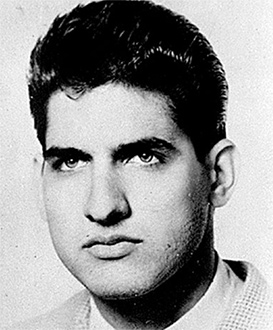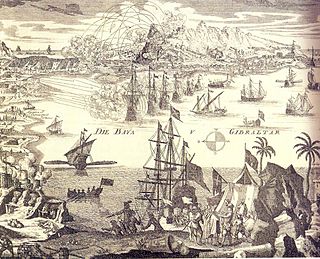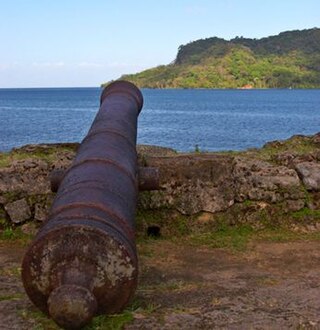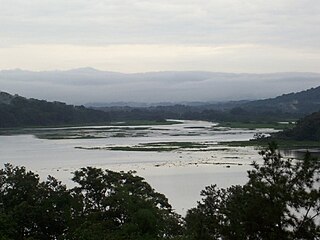This article needs additional citations for verification .(October 2024) |
This is a list of wars involving the Republic of Panama from the colonial period to the modern era.
This article needs additional citations for verification .(October 2024) |
This is a list of wars involving the Republic of Panama from the colonial period to the modern era.
Anglo-Spanish War (1585–1604):
Anglo-Spanish War (1727–1729): Blockade of Porto Bello (1726 – 1728)
| Conflict | Combatant 1 | Combatant 2 | Results |
|---|---|---|---|
| Gran Colombia–Peru War (1828–1829) | Stalemate
| ||
| Watermelon Riot (1856) | Defeat
| ||
| Panama Crisis (1885) | | Defeat
| |
| Thousand Days' War (1899–1902) | Victory
| ||
| World War I (1917–1918) | Victory
| ||
| Coto War (1921) | Defeat
| ||
| World War II (1941–1945) | Victory
| ||
| Cuban invasion of Panama [2] (1959) | Victory
| ||
| Insurgency in Chiriquí (1968–1971) | | Victory
| |
| Nicaraguan Revolution (1978-1979) | | Victory
| |
| United States Invasion of Panama (1989–1990) | Defeat
|

José Daniel Ortega Saavedra is a Nicaraguan politician and the 58th president of Nicaragua since 10 January 2007. Previously, he was leader of Nicaragua from 18 July 1979 to 25 April 1990, first as Coordinator of the Junta of National Reconstruction from 19 July 1979 to 10 January 1985, and then as the 54th president from 10 January 1985 to 25 April 1990. During his first term, he implemented policies to achieve leftist reforms across Nicaragua. In later years, Ortega's left-wing radical politics cooled significantly, leading him to pursue pro-business policies and even rapprochement with the Catholic Church. However, in 2022, Ortega resumed repression of the Church, and has imprisoned prelate Rolando José Álvarez Lagos.

Nicaragua, officially the Republic of Nicaragua, is the geographically largest country in Central America, comprising 130,370 km2 (50,340 sq mi). With a population of 7,142,529 as of 2024, it is the third-most populous country in Central America after Guatemala and Honduras.
Nicaragua is a nation in Central America. It is located about midway between Mexico and Colombia, bordered by Honduras to the north and Costa Rica to the south. Nicaragua ranges from the Caribbean Sea on the nation's east coast, and the Pacific Ocean bordering the west. Nicaragua also possesses a series of islands and cays located in the Caribbean Sea.

The Sandinista National Liberation Front is a Christian socialist political party in Nicaragua. Its members are called Sandinistas in both English and Spanish. The party is named after Augusto César Sandino, who led the Nicaraguan resistance against the United States occupation of Nicaragua in the 1930s.

Hugo Spadafora Franco was a Panamanian physician and guerrilla fighter in Guinea-Bissau and Nicaragua. He criticized the military in Panama, which led to his murder by the government of Manuel Noriega in 1985.

The Good Neighbor policy was the foreign policy of the administration of United States President Franklin D. Roosevelt towards Latin America. Although the policy was implemented by the Roosevelt administration, President Woodrow Wilson had previously used the term, but subsequently went on to justify U.S. involvement in the Mexican Revolution and occupation of Haiti. Senator Henry Clay had coined the term Good Neighbor in the previous century. President Herbert Hoover turned against interventionism and developed policies that Roosevelt perfected.

The Nicaraguan Revolution began with rising opposition to the Somoza dictatorship in the 1960s and 1970s, the ouster of the dictatorship in 1978–79, and fighting between the government and the Contras from 1981 to 1990. The revolution revealed the country as one of the major proxy war battlegrounds of the Cold War.
Women played a role in the Nicaraguan Revolution. Those who joined the Sandinista movement in the revolutionary Nicaragua essentially fought a battle: to secure national freedom from the Somoza dictatorship and to advance gender equality.

Bilateral relations between the various countries of Latin America and the United States of America have been multifaceted and complex, at times defined by strong regional cooperation and at others filled with economic and political tension and rivalry. Although relations between the U.S. government and most of Latin America were limited prior to the late 1800s, for most of the past century, the United States has unofficially regarded parts of Latin America as within its sphere of influence, and for much of the Cold War (1947–1991), vied with the Soviet Union.
Chinese Nicaraguans are Nicaraguans of Chinese ancestry who immigrated to or born in Nicaragua. They are part of the Chinese diaspora.
The Central American crisis began in the late 1970s, when major civil wars and communist revolutions erupted in various countries in Central America, causing it to become the world's most volatile region in terms of socioeconomic change. In particular, the United States feared that victories by communist forces would cause South America to become isolated from the United States if the governments of the Central American countries were overthrown and pro-Soviet communist governments were installed in their place. During these civil wars, the United States pursued its interests by supporting right-wing governments against left-wing guerrillas.

The Anglo-Spanish War of 1727–1729 was a limited war that took place between Great Britain and Spain during the late 1720s, and consisted of a failed Spanish attempt to capture Gibraltar and an unsuccessful British Blockade of Porto Bello with a high British death toll. It eventually ended with a return to the previous status quo ante bellum following the Treaty of Seville.

The Blockade of Porto Bello was a failed British naval action against the Spanish port of Porto Bello in present-day Panama between 1726 and 1727 as part of the Anglo-Spanish War. The British were attempting to blockade the port to stop the Spanish treasure fleet leaving for Spain with its valuable cargo. However tropical disease took its toll of the seamen to the extent that the British had to leave to re-crew, during which time the Spanish were able to re-commence shipping operations.

The Communist Party of Cuba is the sole ruling party of Cuba. It was founded on 3 October 1965 as the successor to the United Party of the Cuban Socialist Revolution, which was in turn made up of the 26th of July Movement and Popular Socialist Party that seized power in Cuba after the 1959 Cuban Revolution. The party governs Cuba as an authoritarian one-party state where dissidence and political opposition are prohibited and repressed. The Cuban constitution ascribes the role of the party to be the "leading force of society and of the state".

Encarnación, was an armed Spanish merchant ship of the Nao class, which was built in Veracruz, Viceroyalty of New Spain, likely sometime in the mid-1600s. The ship sank in a storm in 1681 at the mouth of the Chagres River and was discovered by archaeologists from the Texas State University in 2011.

Cuban foreign policy during the Cold War emphasized providing direct military assistance to friendly governments and resistance movements worldwide. This policy was justified directly by the Marxist concept of proletarian internationalism and was first articulated by Cuban leader Fidel Castro at the Organization of Solidarity with the People of Asia, Africa and Latin America in 1966. However, as an informal policy it had been adopted as early as 1959, shortly after the Cuban Revolution. It formed the basis for a number of Cuban military initiatives in Africa and Latin America, often carried out in direct conjunction with the Soviet Union and Warsaw Pact member states which provided advisory or logistical support. These operations were often planned by the Cuban general staff through an overseas headquarters known as an internationalist mission.

Cuba intervened into numerous conflicts during the Cold War. The country sent medical and military aid into foreign countries to aid Socialist governments and rebel groups. These interventionist policies were controversial and resulted in isolation from many countries. Due to the ongoing Cold War, Cuba attempted make allies across Latin America and Africa. Cuba believed it had more freedom to intervene in Africa as the U.S. was more concerned about Latin America. Still, the US was strongly opposed to Cuban involvement in Africa and continued Cuban intervention was a major source of tension. Cuban intervention was often confidential and all Cuban doctors and soldiers were forced to keep their location confidential.
Anarchism in Nicaragua emerged during the United States occupation of Nicaragua, when the workers' movement was first organized against the interests of foreign capital. This led to a synthesis of Latin American anarchism with the goals of national liberation, which influenced the early Sandinista movement.
Cuadernos was a Spanish-language magazine that was published in Paris, France, in the period 1953–1965. Its full title was Cuadernos del Congreso por la Libertad de la Cultura. It was one of the publications of the Congress for Cultural Freedom.
Gilbert M. Joseph is an American scholar and writer. He received his doctorate from Yale University in Latin American history in 1978, where he is presently a Farnam Professor Emeritus of History and International Studies. He has been the recipient of numerous awards, including the Sturgis Leavitt Best Article Prize (1981,1987), the Tanner Award for Inspirational Teaching of Undergraduates at the University of North Carolina, Chapel Hill (1980), and the Harwood F.Byrnes/Richard B. Sewall Prize for Teaching Excellence at Yale University (2017). Joseph presided over the Latin American Studies Association (LASA) from 2015 to 2016.